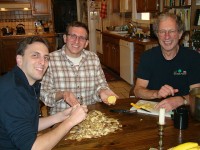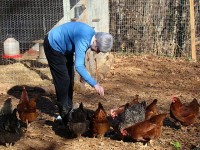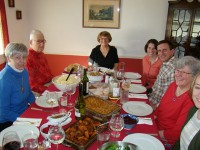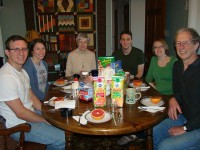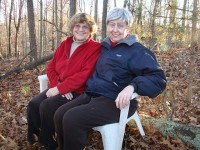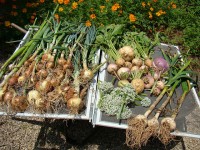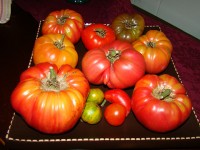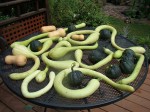Sun 27 Nov 2011
A Blessed Thanksgiving
Posted by Bob under Chickens, Family and Friends, Farms and Food
No Comments
“Blessed” is very much part of Southern vocabulary–sometimes with an explicit religious connotation but otherwise simply constituting a recognition of the many things we cannot take personal credit for but that enrich our lives deeply: the extraordinary beauty of our surroundings in Nelson County, the expanding web of friendship we’ve become part of, the local knowledge and resourcefulness we’ve benefited from, and much more. And at Thanksgiving this year, we felt blessed not only to have Nic and Alison, Tim and Megan, and my sister Eleanor with us, but be able to share in their impressively interesting and productive lives.
More of a surprise was the bonding that went on between Eleanor and our chickens, whom she was “meeting” for the first time. Eleanor became the main egg collector, snack provider, and even poopy cleaner-upper for the time she was here, and she shared in the pleasure we take from simply sitting in the chairs alongside the outer pen and watching the antics and machinations of our flock of fourteen hens.
Our Thanksgiving turkey was an organically-raised and free range Midget White from Tall Cotton Farm (not that midget at twenty pounds), a breed we were surprised to learn has not only been rated as the best-tasting turkey by Mother Earth Magazine but was developed by a plant geneticist at the University of Massachusetts in Amherst, from which Tim and Megan just received their Ph.D.’s in Computer Science. We were joined at dinner by two local friends, Mikel and Linda, and it was a lovely time. Later on, we introduced the kids to Recipe, a card game we’d learned down here from our (93 year-old!) friend and neighbor, Virginia Page, whom we also feel blessed to know.
click here for more Thanksgiving pictures
